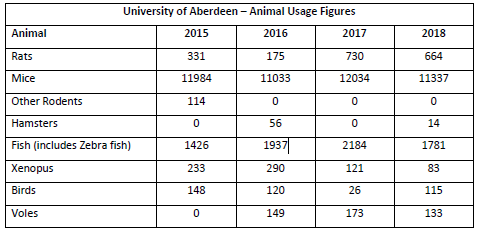Charities have raised “grave concerns” over the number of animals being subjected to scientific tests at north-east universities.
At Scotland’s Rural College, on the outskirts of Aberdeen, 54,307 animals have been tested on since 2015.
At Aberdeen University, more than 57,000 animals have been used in experiments, including hamsters, voles and fish.

A spokeswoman from organisation Animal Aid said: “Animal experiments are of the gravest concern to Animal Aid, especially those conducted in universities which should be progressive places and seats of learning.
“We call on all of those engaged in experiments on animals to instead use human-relevant and innovative non-animal methods.”
An Aberdeen University spokeswoman said: “We are committed to the reduction, replacement and refinement of animal testing.
“Many major medical advances have depended on the use of animals in medical research and testing.”
At Scotland’s Rural College, cattle, chickens, turkeys, pigs and sheep have been tested on.
There were 9,994 tested on in 2015 compared to 11,541 in 2018.
The college stated: “Most of the animals used in our studies are classified as experiencing mild distress, but with no significant impairment of their wellbeing or general condition.”

At the Robert Gordon University, the animals tested on have been confined to rats and mice – and the numbers have reduced significantly in the last five years.
In 2015 there were 493 mice and 40 rats tested on, compared to just 292 mice last year.










